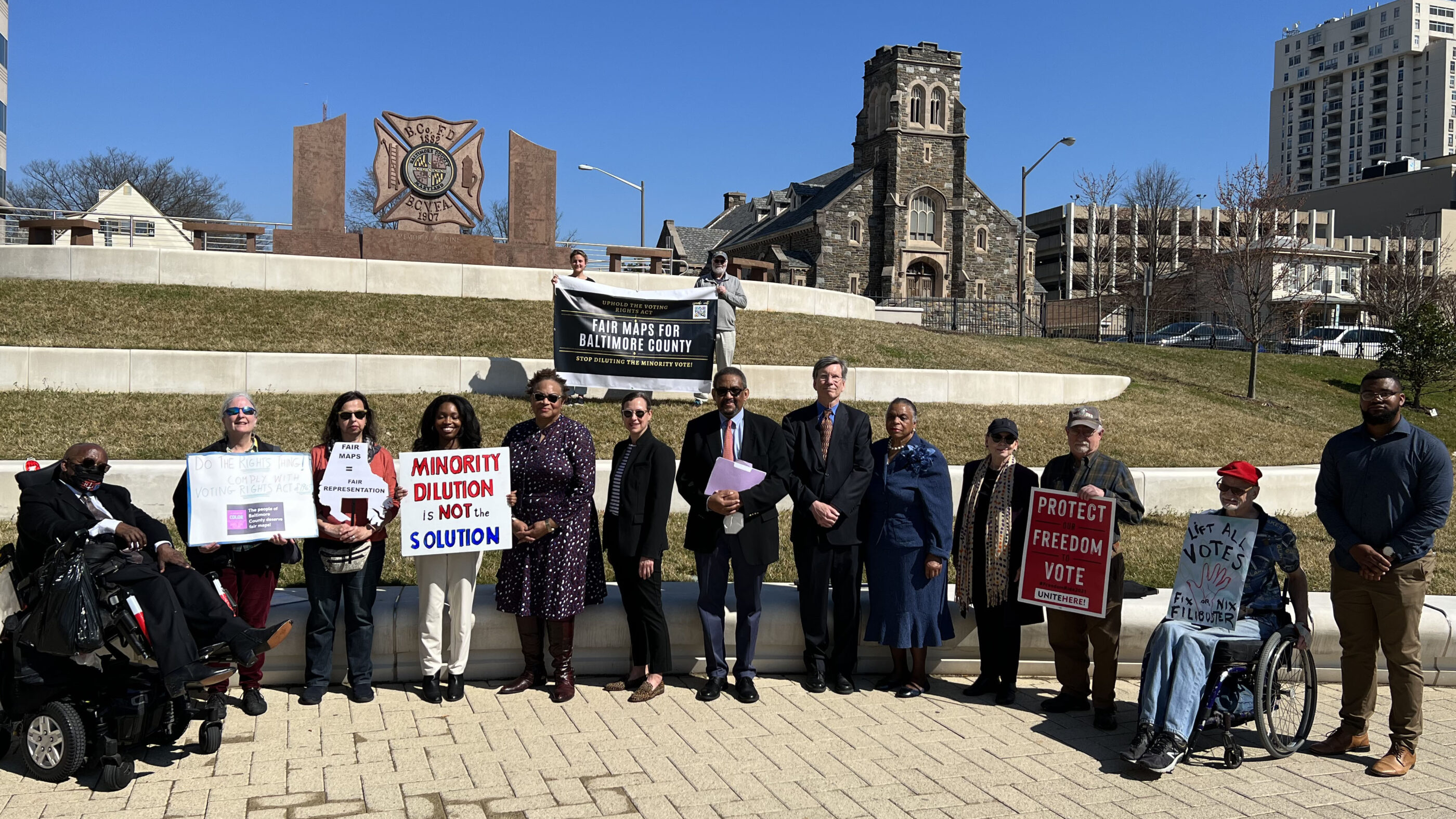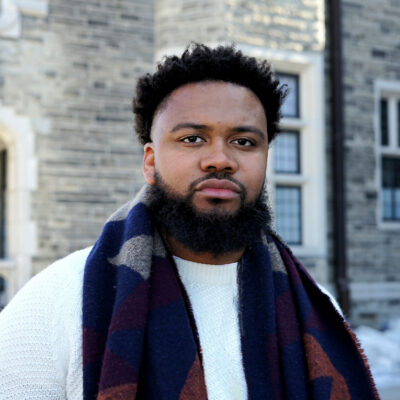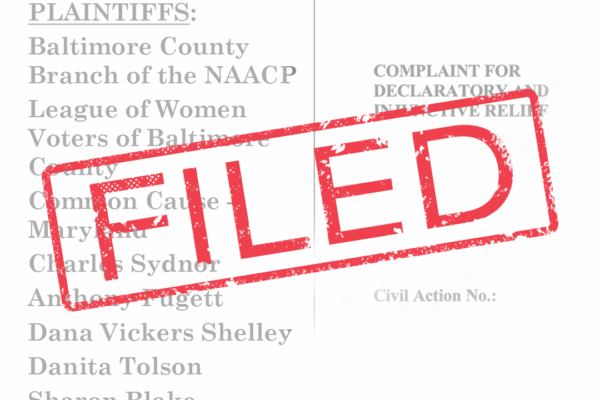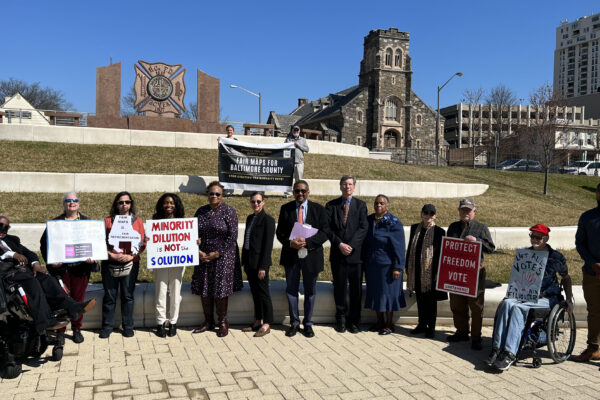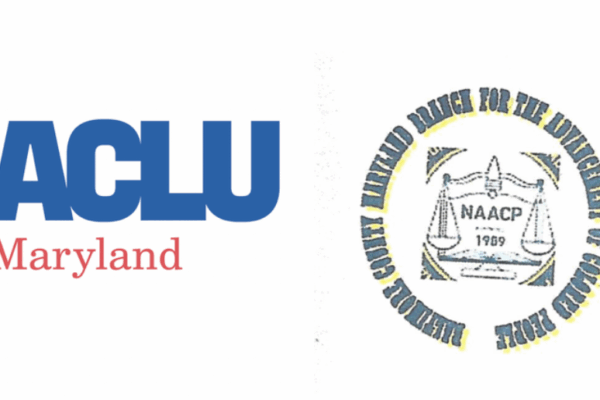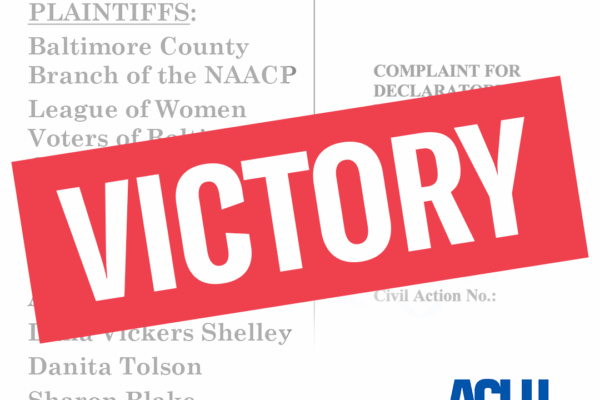Our democracy is threatened without real access to voting for all. The ACLU of Maryland has long worked to stop voter disenfranchisement through state-wide initiatives like our Election Protection program.
Our democracy is threatened without real access to voting for all. The ACLU of Maryland has long worked to stop voter disenfranchisement through state-wide initiatives like our Election Protection program. While tactics of ballot exclusion have evolved over the years, the path to overcoming this ailment and expanding fundamental suffrage is no modern idea.
In 1965, President Lyndon B. Johnson signed into law the Voting Rights Act (VRA), which sought to realize the voting rights guarantees of the Fourteenth and Fifteenth Amendments to the U.S. Constitution and prohibit the discriminatory voting practices fostered by many southern states, as well as some in the north, in the aftermath of the Civil War. The law, along with the Civil Rights Act signed a year earlier, was the most progressive civil rights legislation passed since the Reconstruction Amendments between 1865 and 1870.
Despite the VRA’s longevity, the unfilled promises of fair voting districts, expansion of voter rights, and an accessible electoral system continue to be elusive for too many.
America has grappled with persistent and pernicious voter disenfranchisement since its founding. Thomas Jefferson wrote in the Declaration of Independence that “governments are instituted among men, deriving their just powers from the consent of the governed.
Disenfranchisement is as American as the Fourth of July.
However, this dubious idea presented a dilemma with the right of suffrage exclusively held by white, male, Protestant property owners over the age of 21. This left out Black people, women, Indigenous people, non-English speakers – essentially everyone else. Voter exclusion is a centuries-old practice felt deeply in American traditions. Disenfranchisement is as American as the Fourth of July.
The process of redistricting, around since colonial times, was established to assist in political participation by periodically re-drawing electoral district boundaries. In 1967, two years after the passage of the Voting Rights Act, Congress required that Congressional representatives be elected from single-member districts, which is how most states operate today.
The ACLU of Maryland has been advocating for single-member districts in many county and local jurisdictions in Maryland as well. As the United States continues to expand in population, electoral maps must reflect a voting system representative of its people.
Particular sections of the Voting Rights Act were created to stop voter suppression, and the removal of those protections disproportionately affects Black voters while scarring the integrity of representative government. In 2013, in a decision that opens the door wider for voter suppression, the United States Supreme Court ruled in Shelby County v. Holder that Section 4 (b) of the Voting Rights Act was unconstitutional because the formula used to identify jurisdictions with historically discriminatory voter laws was outdated. The section was created by the federal government for states and political subdivisions to help monitor voting practices in jurisdictions with contentious historical racial discrimination.
The Supreme Court’s decision in Shelby County to strike Section 4(b) gutted Section 5 of the Voting Rights Act – the important preclearance provision that required jurisdictions with a history of discrimination to obtain federal approval before changing their election laws. As Justice Ruth Bader Ginsberg said in her dissent in Shelby County, “The Voting Rights Act became one of the most consequential, efficacious, and amply justified exercises of federal legislative power in our Nation's history.”
The loss of Sections 4 and 5 of the Voting Rights Act were indeed consequential. In 2021 redistricting officials across the country in jurisdictions newly shielded by the Supreme Court from Section 5 coverage have run roughshod over the rights of Black and Brown voters, sweeping away long-established majority-Black districts through racist gerrymanders.
For now, Section 2 of the Voting Rights Act still exists to protect racial minorities “to participate in the political process and to elect representatives of their choice,” and the ACLU of Maryland is working to ensure these protections are implemented by jurisdictions in our state as they redraw congressional, state and local election districts.
Black, Indigenous, and People of Color are among the highest rates of population growth in the United States, but in certain states, district boundaries are not reflective of this growing diversity.
Alabama is an infamous example. In February of 2022, in an ACLU challenge to the state’s congressional redistricting plan, the U.S. Supreme Court dealt a serious blow to Black voter power by reinstating a congressional map that creates only one district likely to elect a Black representative – through tactics known as “packing” and “cracking” of Black communities to limit their influence. Although a conservative three-judge court struck down Alabama’s new Republican-drawn map as violative of Section 2, the Supreme Court reinstated it for this year’s election, as the Court takes up Alabama’s appeal from that ruling in the fall.
Sadly, Alabama isn’t alone. There have been legal challenges to gerrymanders in legislative redistricting plans from Texas, Louisiana, Georgia, Florida, Arkansas, and North and South Carolina. Meanwhile, in Maryland, the United States Census showed that the state’s population had grown by 7% since 2010.
Within Maryland, the jurisdictions experiencing the largest population incline were Anne Arundel County at 9%, Prince George County at 12%, Charles County at 13%, Howard County at 15%, and Frederick County at 16%. These additions to population growth also made Maryland more diverse. Those who identify as Black and African American grew 7%, Indigenous and Natives grew 56%, Asian grew 32%, Latinx grew 55%, while multi-racial identifiers jumped 192%.
As Maryland continues to diversify, electoral maps must keep pace with those changing demographics to ensure truly representative government. Often, however, elected leaders comfortable with the status quo resist creating systems of fair representation. In late December 2021, despite months of outcry by residents, Baltimore County officials passed a racially discriminatory election plan that unfairly suppressed the voting rights power of BIPOC voters. The County’s BIPOC residents have grown to 47% of Baltimore County's population, an increase from 25% in 2000 and 35% in 2010. Despite this growth, the Council's redistricting plan created a racial gerrymander maintaining six out of seven districts as majority white.
By packing an excessive number of Black voters into a single majority-Black district, the County plan diluted the political power and opportunities of Black voters throughout Baltimore County. A joint coalition that included the Baltimore County NAACP, Common Cause Maryland, the League of Women Voters of Baltimore County, and several individual plaintiffs sued Baltimore County to challenge its illegal plan. The coalition alleged that Baltimore County’s history of discrimination and racially polarized voting enabled white residents to bloc vote to defeat and discourage Black candidates from running in majority-white districts. Indeed, no Black candidate in its history has been elected to the County Council from a majority-white district – a situation that is unacceptable in a county that is nearly half BIPOC residents.
On February 22, the Plaintiffs achieved victory when U.S. District Court Judge Lydia Kay Griggsby recognized the map as racially discriminatory and ordered the County Council to create a fair map that aligns with the Voting Rights Act. The organizations were pushing to have two majority Black voting districts and offered map plans that would align better with the Voting Rights Act while complying with traditional redistricting principles.
On March 24, the judge accepted the new map drawn by county officials even though it did not create two majority Black voter districts. The newly drawn map was less racially biased than the first, but time will tell if it is enough to overcome racially polarized voting and white voter blocs.
“All we were asking for is a level playing field, and I am disappointed that the court did not level the playing field.”
“All we were asking for is a level playing field, and I am disappointed that the court did not level the playing field,” said Anthony Fugett, a plaintiff in the case. “The County Council continues to pack District 4 with over 64% Black voters, which leaves white voters in the majority in District 2. That means white voters in District 2 will continue to have veto power over the desires of Black voters, despite the west side of Baltimore County being majority Black. That speaks volumes to me, and I hope that speaks volumes to all of my neighbors.”
Expert witness in the case, Dr. Lawrence Brown, added this on the history of Baltimore County: “It's my hope that this decision serves as a galvanizing moment to escalate the struggle for equity in outcomes. Even raising awareness of Baltimore County's long racist history can go a long way towards helping people to mobilize and make important demands, such as reparations from the county for inflicting tremendous damage on Black enclaves and Black residents, a stronger push for tackling ongoing residential racial segregation, and better data collection regarding how the county budget is allocated geographically, particularly dollars for community and economic development.”
In Maryland, a resident can vote if they are 18 years old by the General Election by November 8, 2022 – even if you are unhoused – as long as you are a U.S. citizen and not currently incarcerated for a felony conviction.
In an echo of irony, voter eligibility does not guarantee voter accessibility or efficacy; just as the Fifteenth Amendment granted Black people the right to vote but excluded Black women and did nothing to stop voter intimidation, grandfather clauses, poll taxes, literacy tests, Jim Crow laws, property ownership requirements, voter ID laws, and other forms of barriers to exercise the right to vote.
The dwindling regard for the Voting Rights Act throughout the United States is at the base of increased voter suppression.
The dwindling regard for the Voting Rights Act throughout the United States is at the base of increased voter suppression. Now, as challenges to racial gerrymanders in congressional plans from across the South work their way to a seemingly hostile Supreme Court, signs of further voting rights cutbacks are on the horizon, leading us to consider new strategies for legislative reforms to protect voting rights here in Maryland.
The ACLU of Maryland is fully committed to protecting and expanding voting rights, particularly for those who are most marginalized.
If we’ve seen anything this past year, it’s that fundamental rights, including voting rights, remain vulnerable to political ploys and threats. Protecting and ensuring access to voting remains a top priority of the ACLU of Maryland because the ideals of justice in America fail when our voting rights are undermined.
(Debbie Jeon contributed to this article. Banner photo credit: Alicia Smith)

